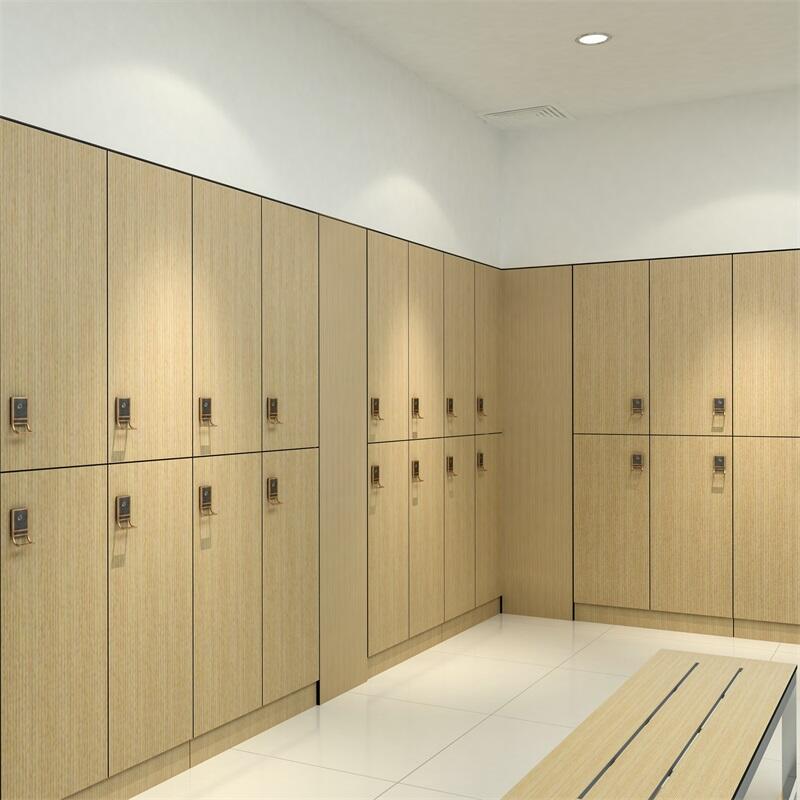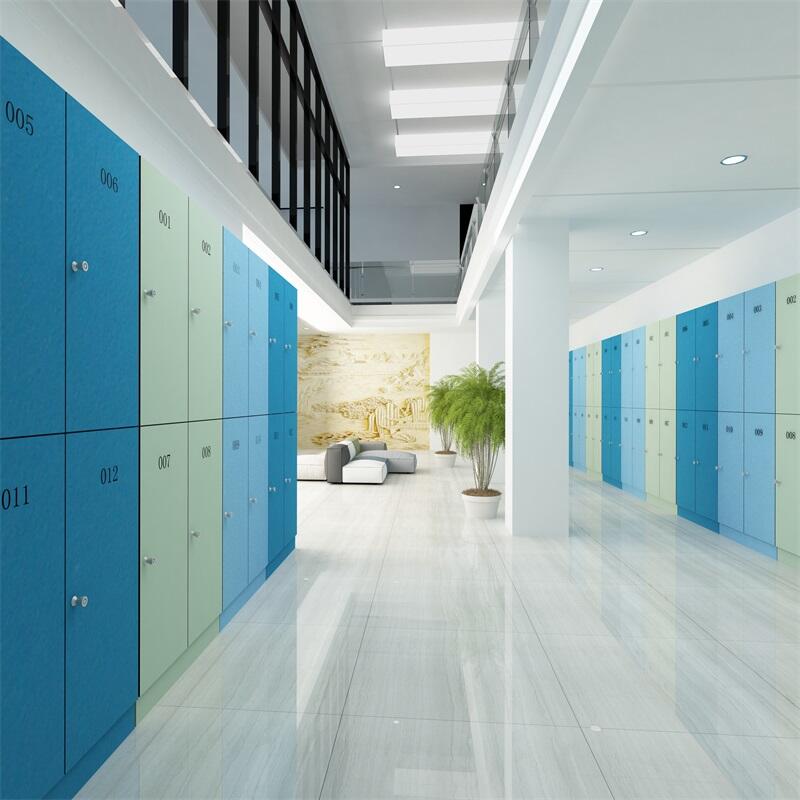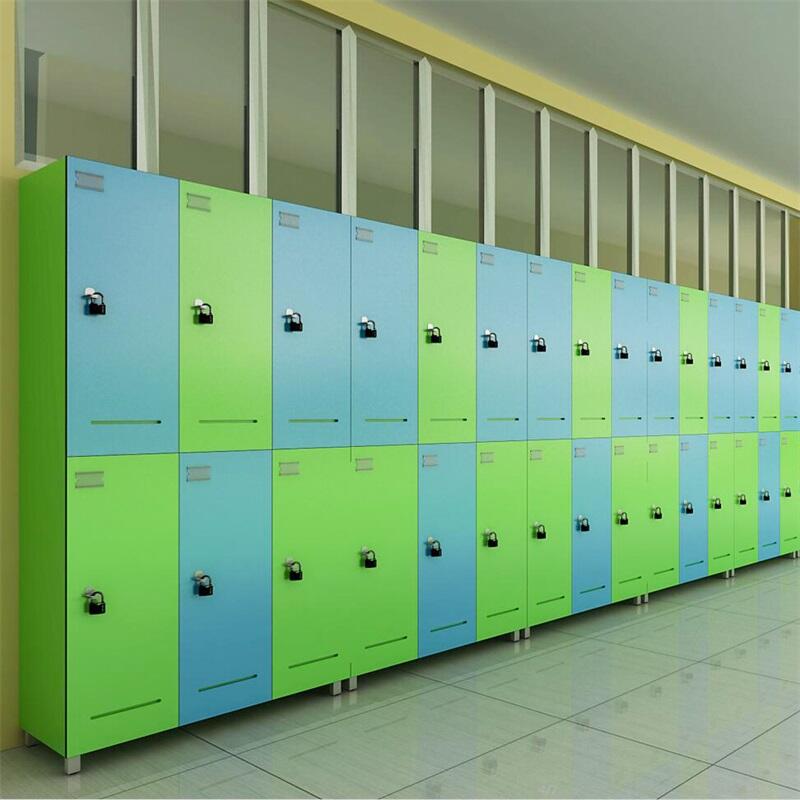How to choose athletic lockers for different sports?
Athletic lockers are a must have for sports facilities as they keep athletes’ gear—such as uniforms, shoes, and equipment—organized, secure, and dry. However, not every type of locker suits all sports. For instance, a locker for swimmers needs to handle moisture well, while one for football players must be able to fit bulky pads. Selecting the right athletic lockers involves matching their design, size, and features to the specific requirements of each sport. Below is a guide to help you choose the best lockers for common sports.

Match Locker Size to Sport Specific Gear
The first thing to do when choosing athletic lockers is to ensure the size fits the gear athletes use. For sports with small and lightweight gear like running, tennis, or yoga, compact lockers (12 inches wide × 18 inches deep × 36 inches tall) are suitable. These lockers can hold a change of clothes, a pair of shoes, a water bottle, and a small bag without wasting space.
For sports that require bulkier gear, larger lockers are necessary. Basketball and volleyball players carry jerseys, shorts, knee pads, and large sneakers, so their lockers should be at least 15 inches wide × 24 inches deep × 48 inches tall. Football, hockey, and lacrosse players have even bigger gear, including shoulder pads, helmets, and cleats. These sports call for extra large lockers (18-24 inches wide × 30 inches deep × 72 inches tall) or double tier lockers with extra depth to fit all equipment without overcrowding.
Swimming and water polo have different size needs. Although their gear (swimsuits, towels, goggles) is small, athletes often bring large tote bags for wet items. Lockers for these sports should be deep enough (24-30 inches) to hang towels or store wet bags without water dripping onto other lockers.

Select Features for Sport Specific Convenience and Security
Features like shelves, hooks, and locks should match how athletes use their lockers. For sports where gear needs to be hung—such as football (helmets, pads) or basketball (jerseys, jackets)—lockers with built in hooks (both upper and lower) are essential. Upper hooks can hold helmets or jackets, while lower hooks keep shoes off the floor to avoid dirt and moisture.
Swimming and water sports require lockers with drainage holes or raised floors. Wet towels and swimsuits leave water in lockers, so drainage holes allow water to escape, preventing mold and mildew. Raised floors keep gear off the wet bottom of the locker, ensuring dry items (like extra clothes) do not get damp.
Security is important for all sports, but some require extra protection. For team sports where athletes store expensive gear (like hockey sticks or running shoes), lockers with heavy duty locks (such as combination locks or keyed locks) are better than simple padlocks. For youth sports facilities, lockers with easy to use locks (like push button locks) are ideal—kids can open them without struggling with keys.
Another useful feature for team sports is nameplates or number tags. These help athletes find their lockers quickly, especially in busy facilities with many lockers. Some lockers even have clear windows, allowing athletes to see their gear without opening the door, which saves time before practice or games.
Ensure Compliance with Sport Facility Standards
Finally, athletic lockers must meet safety and accessibility standards for sports facilities. For example, in the United States, facilities must follow ADA (Americans with Disabilities Act) guidelines. This means some lockers must be at a lower height (30-48 inches from the floor) to accommodate athletes with disabilities. Lockers should also have rounded edges to prevent injuries, especially in youth sports facilities where kids might run into them.
For school sports facilities, lockers must meet fire safety standards. Materials like steel or fire retardant plastic are better than wood, which burns easily. For professional sports facilities, lockers may need to meet league specific standards. For instance, NFL locker rooms require lockers of a minimum size to fit players’ large gear and provide enough space for changing.
Consider Facility Space and Sport Usage Frequency
The number and layout of lockers depend on the size of the facility and how often the sport is played. For high frequency sports like gym class or daily swim practice, you need enough lockers to avoid overcrowding. Aim for one locker per athlete, or at least one per two athletes for casual use. For low frequency sports like seasonal football or tennis tournaments, you can use fewer lockers, but they should be flexible (like movable lockers) to adjust to different group sizes.
Layout is also important. For team sports, arranging lockers in rows with benches in between makes it easy for athletes to change together. For individual sports like running or yoga, lockers can be placed in smaller clusters near changing rooms for privacy. For sports with large gear like hockey, leave extra space between rows of lockers. This gives athletes room to take out bulky equipment without bumping into others.

Choose Materials That Adapt to Sport Related Conditions
Athletic lockers face different environmental challenges based on the sport, so choosing the right material is crucial. For sports involving water—such as swimming, diving, or water aerobics—moisture is the main problem. Lockers made of stainless steel or plastic (like HDPE) are perfect here. Stainless steel resists rust and corrosion, while HDPE is waterproof and does not absorb moisture. Avoid wood or standard steel lockers for these sports: wood rots when exposed to constant dampness, and standard steel rusts quickly.
For outdoor sports facilities used for soccer, baseball, or track, lockers need to withstand weather conditions like rain, heat, and cold. Powder coated steel lockers work well outdoors because the powder coating provides a protective layer against rust and UV damage. For indoor sports like basketball or gymnastics, where moisture is low but wear and tear is high, durable materials such as welded steel (with a scratch resistant finish) are a good choice. They can handle athletes dropping gear or bumping into lockers without getting damaged.
Wrestling and martial arts facilities have unique needs: lockers must be easy to clean since athletes may sweat a lot and leave odors. Stainless steel or plastic lockers are the best options here—they can be wiped down with disinfectant every day to prevent bacteria buildup and odors.
In summary, choosing the right athletic lockers is not a one size fits all process. By matching the size to the gear, the materials to the conditions, the features to convenience, and the layout to the space, you can select lockers that meet the unique needs of each sport. This not only keeps athletes’ gear organized and secure but also improves their experience at the facility, making practices and games smoother for everyone.




